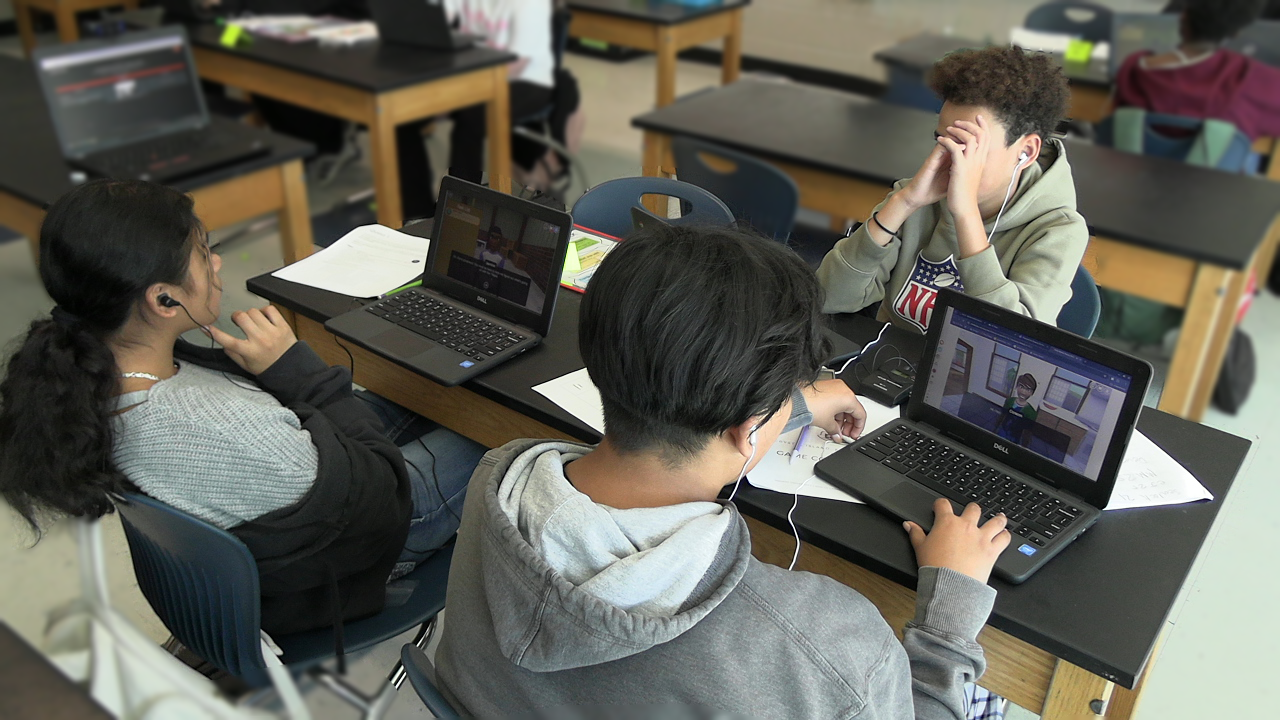Growing Together While Cultivating Excellence – A Three-Part Series
PLLC Research Scholar Jaclyn B. Stevens shares her takeaways for coaches and leadership fostering growth while learning and leading in the age of complexity.
Part One: Crop Selection and Preparing the Environment
Many educators do not realize they are leaders until they are put in a position or given an opportunity to lead. I have been given the opportunity to lead in many capacities, be it in small groups, church groups, nonprofit organizations and, most of all, professionally as an educator and instructional coach. In all these leadership situations, I continue to constantly think of what I have to do and be for others: working shoulder to shoulder with those I support, analyzing needs, setting goals, providing strategies and ultimately creating opportunities for whoever and whatever is needed to support student-centered learning and teaching. It is what all good educational leaders strive to do.
But how do we lead by creating the environment and logistics to foster and nurture growth for those we support? How can we all grow together?
The answer—we have to think like a farmer.
Consider the farmer: they rise early, they spend their day in the field, they select the right seeds to plant in various conditions, they cultivate the earth, they nourish and monitor growth—a metaphor apt for the major roles a leader takes on. Using the “growth” metaphor from Drake Taylor’s book The Four Hats of Leadership, educational leaders have a framework for planning for change, fostering the right environment for strategic planning, selecting the resources and tools necessary, nurturing stakeholders, monitoring growth and reaping the rewards of success.

The six stages of farming and leadership are: crop selection, environment preparation, seed selection, nurturing (with irrigation and fertilizing), monitoring growth and harvesting the crop.
Crop Selection
Using Taylor’s metaphor, a farmer can often pick their crops, but when we are leading in education, we cannot always control the work that is laid out before us or what we inherit from a predecessor. Either way, we have to take stock of our crops (crops being the programs/projects/initiatives, etc.) and make sure we understand how they were planned and what expectations we have set for growth. What is or was the vision? How was the project(s) initiated, etc.? Depending on when the project began or how well it has been led thus far, we will need to make adjustments, just as a farmer does when a field is not producing. And, unfortunately, sometimes we need to decide if crops need to be plowed under and a project needs to end.
Here are two activities to help discern what “crops” we want to put our time, energy and resources into.
What is the WHY?

‘Why’ is how we explain our purpose and the reason we exist and behave as we do. Simon Sinek’s theory is that successfully communicating the passion behind the WHY is a way to communicate with others and connect on a whole new level. This circle (called the Golden Circle) is a visual of how we need to approach WHY we do what we do, and, once we understand this, we can more effectively focus on the “how” and the “what” we select.
To help teams hone in on our WHY, consider an activity called “10 words”. It is an individual prompt that, when shared with the whole group, can highlight common ideas, expectations, concerns and goals.
HERE IS A TEMPLATE to be modified to support facilitating these conversations. The goal is to come to a team consensus with staff, stakeholders, and possibly even students, to create WHYs together and select the projects, initiatives and/or programs aligned to that WHY. Any crop that is not aligned toward a shared WHY is probably not worth working on.
Shared values
Another element to consider when we assess and choose our “crop” of projects is to discuss and clarify shared values. Values shape our thoughts, words and actions. They influence our decisions, guide us in problem-solving, and serve as touchstones that we continually return to when we face conflict, dilemmas or challenges. Values also set a common foundation shared by members of a team and community. More often than not, however, we do not make time to talk about our values and check in with each other when these values may, or may not, be in alignment with the projects and/or programs we are invested in.
The following VALUES ACTIVITY will facilitate the identification of individual values, which can lead to the creation of shared values across teams and school wide. Exemplary leaders understand and appreciate the values of their constituents and find a way to affirm these shared values regularly. This way leaders give their people reasons to care, not simply orders to follow. Also, if a project’s purpose and goals align with shared values, we can set our actions and priorities for success and sustainability.
Preparing the environment
“When a flower doesn’t bloom, you fix the environment in which it grows, not the flower.” – Alexander Den Heijer
This phase involves creating the right environment for seeds (people) to grow in. We have to inspect and cultivate the soil to get it ready for planting. What is the environment that will allow the majority of seeds to flourish? What can we do to prepare soil for plants that want to grow? Will they have adequate protection from all the elements (other people, conflicts, politics and the like)? Will they be able to weather anything that is thrown at them? Whether a metaphor or literal, our projects and our work environment are key components for success and sustainability.
Our environment is our culture.
School culture is defined by the collective attitudes of the larger group. It tells us norms in our school and how to react when a norm is broken. This can result in a positive or negative influence on the attitudes of individuals. And, if culture is a school’s or organization’s personality, climate is its attitude. The biggest difference between the two is that an attitude is far easier to change than a personality.
Morale—the degree of happiness among staff—is particularly reflective of culture and has a very strong effect on climate. So how are we preparing the environment for our crop – those goals, projects and plans we have chosen to flourish? Our values and our WHY will support starting this conversation, but what else can we do?
Considering Culture
We need to know where we are in our culture to know where we want to be.
First, if we are not already doing so, we must discuss the climate and culture of our learning environments, schools, districts, organizations, teams—all of it—with all stakeholders regularly. Not just at the beginning of the school year but throughout the school year. And we need data to do this right. Surveys are a great place to start. And above all, we really need to listen. Perception is truth and, even if it may not be how we see it, what our stakeholders think and feel about the culture is what is most important.
Climate is around us. With a few strategic tools, we can begin to highlight and identify our school cultures while pinpointing focus areas and fostering important conversations.
Addressing climate is a good strategy for assessing and leveraging cultural change. We change behaviors and attitudes by employing specific leadership strategies. Over time, if these changes are sustained, the new behaviors or attitudes will become a part of the culture, thus relieving leaders of having to manage them and making them essential.
These three example resources are a place to start when having culture and climate conversations, retrieving data with a school culture survey activity and taking the time to listen with a school culture typology activity.
Stay Tuned for Part Two: Seed Selection and Nurturing Your Crop
 Jaclyn B. Stevens coaches and assists K-12 educators, ITFs, and administrators to adapt, not adopt, fostering initiatives to transform professional learning through changes in pedagogical shifts and meeting the needs of all learners to champion creativity and innovation. She is a research scholar at the Friday Institute, part of the College of Education at North Carolina State University.
Jaclyn B. Stevens coaches and assists K-12 educators, ITFs, and administrators to adapt, not adopt, fostering initiatives to transform professional learning through changes in pedagogical shifts and meeting the needs of all learners to champion creativity and innovation. She is a research scholar at the Friday Institute, part of the College of Education at North Carolina State University.
@jaclynbstevens | jlbell@ncsu.edu
- Categories:



